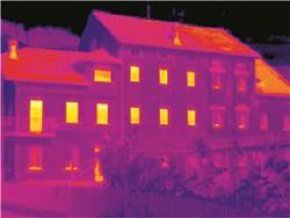Changes in SAP 10
Contents |
[edit] Introduction
An update on what has been happening in the background with the forthcoming changes to standard assessment procedures (SAP). There was a consultation in 2017 on the changes to SAP methodology following general feedback from end users and government that the system was not representative of ‘real world’ situations and was becoming more of a ‘ticking the box process’. In July 2018, BRE published their first version of 'SAP 10'.
N.B. SAP 2012 is current and will remain so until there are changes in the Building Regulations which all of the respective administrations are currently investigating. So the changes that are listed here are really just tinkering ‘under the bonnet’ with no actual changes to the performance requirements. This will take place in the next version of the Building Regulations (Section 6 / Part L). What is important to note that the tinkering to the methodology will have an impact, but the real life implications will only come to light once the next version of the Regulations are published.
The most important changes to note in the new SAP 10 are:
[edit] Fuel prices and CO2 factors
Many of the fuel types recognised in SAP have had their fuel prices, CO2 and primary energy factors tweaked. The most common fuel types and changes from SAP 2012 to SAP 10 are shown below;
| Fuel |
SAP 2012 Unit Price (p/kWh) |
SAP 10.2 Unit Price (p/kWh) |
SAP 2012 Carbon Factor (kgCO2/kWh) |
SAP 10.2 Carbon Factor (kgCO2/kWh) |
| Mains Gas | 3.48 | 3.64 (4.6%) | 0.216 | 0.210 |
| Bulk LPG | 7.60 | 6.74 (-11.3%) | 0.241 | 0.241 |
| Oil | 5.44 | 4.94 (-9.19%) | 0.298 | 0.298 |
| Wood logs | 4.23 | 5.12 (21.04%) | 0.019 | 0.028 |
| Electricity | 13.19 | 16.49 (25.02%) | 0.394 | 0.136 |
Of particular interest is electricity which has seen its CO2 emission factor reduced from 0.519 kgCO2/kWh to 0.233 kgCO2/kWh in SAP 10. This is to reflect the increased influence of renewable energy technologies producing electricity for the national grid. It will be interesting to see whether the next version of regulations give further benefit to electrically heated dwellings to encourage the move away from fossil fuels.
[edit] What this means
The data hints that electrically heated dwellings may become viable – will have to wait for an assessment tool to test in a real world situation
[edit] Heating pattern
Within the BEIS consultation, the standardised heating patterns SAP is based on were discussed, with the option of moving to the same heating pattern for all days proposed. Previously SAP has had different heating patterns for weekdays and weekends, however, studies had shown there was less of a difference between the weekdays and weekends than previously thought.
SAP 10 will move to using the same heating pattern for all days, which is on 07:00-09:00 and 16:00-23:00 hours. SAP should always follow good evidence as closely as possible, so we welcome this change. It will likely mean better ratings for homes as the heating will now be defaulted to being on less at the weekends.
[edit] What this means
Better ratings by default – but the target emission rate (TER) will increase proportionally (so no actual change for compliance).
[edit] Lighting energy
This has had a significant overhaul from the lighting energy calculation in SAP 2012. SAP 10 will calculate a ‘reference lighting capacity’ based on the dwellings floor area and solar gains. Should this capacity not be reached, or be exceeded, the predicted lighting energy will be increased as a result.
This will result in additional data entry for calculating lighting energy in SAP software. Power and efficacy of fixed lighting fittings will now be required in a similar way to the non-domestic methodology known as SBEM. Default efficacy figures are provided where information cannot be obtained.
[edit] What this means
More accurate calculation method – may or may not have anything more than a minor impact
[edit] Thermal bridging
As expected from the BEIS consultation, the default y-value used in assessments where no details of thermal bridging are provided has been raised from 0.15 w/m2k to 0.2 w/m2k in SAP 10. This will create an even more severe penalty for developers who do not consider heat loss through building junctions.
The psi values for the MHCLG Accredited Construction Details (ACDs) scheme have been removed from SAP 10. Again this was expected as the consultation indicated the ACDs were inaccurate and not fit for purpose based on current building practices. This will result in assessors having to rely on other established sets of construction details, or encourage more junction details to be modelled to derive accurate psi values.
Finally many of the remaining ‘default’ psi values have been tweaked. The R1-R9 junctions in particular have been increased which will penalise room in the roof constructions. A new junction has also been added, R10, for any other roof or room in roof junction not covered by R1-R9.
[edit] What this means
Penalising for using any default psi values with more reliance on calculated junctions
[edit] Hot water demand
The calculation of hot water demand will now take into account the number of showers and baths which are present in a dwelling. This will result in a more accurate assessment of hot water demand than currently in SAP 2012.
Also, electricity use from instantaneous electric showers will now be accounted for in assessments. This has not been the case in previous versions of SAP and will result in higher energy use in assessments where used.
[edit] What this means
Penalties for using electric showers (will have an impact).
[edit] Photovoltaic panels
The calculation of electricity generated from PV now has the option to account for battery storage technology. Also where PV is directly heating an immersion coil in a cylinder, known as a PV diverter, this will be able to be reflected in SAP 10.
As discussed in the consultation, SAP 10 will now allow entry of MCS overshading data. The MCS procedure for assessing near and far field objects will provide a more accurate assessment of overshading and will be the preferred method of assessment where an MCS certificate is available.
Finally in SAP 2012., in blocks of flats where PV is supplying a landlord’s supply via a single inverter, the flats could claim the CO2 savings from the electricity generated. In SAP 10 this will no longer be the case; only dwellings with their own inverters will be able to benefit from the cost (£) and CO2 savings associated with PV. This may result in developers seeking alternative solutions for cost (£) and CO2 savings on blocks of flats.
[edit] What this means
The get out for transferring all PV to the landlord’s supply will be removed. Will have an impact for all flatted properties – means that all PV will now have to be fed into each property to achieve the SAP points
[edit] Overheating risk
The assessment of overheating contained in Appendix P of SAP has been changed to more accurately assess the potential for leaving windows open during hot weather. In SAP 10, if natural ventilation is used, assessors will be required to indicate if there is a source of noise that prevents windows being left open, and also if there is a security risk where windows are left open at night. If either of the answers to these questions is ‘yes’, ‘trickle vents only’ will be assumed for the window opening extent and the associated air change rate used in the assessment.
[edit] What this means
More careful detailing will be required – will definitely have an impact (especially for ground floor windows). Overheating is a pass/fail and the vast majority of properties will have to review glazing options. Could mean the introduction of solar reflective glazing, which has a knock-on effect to the efficiency of a property (the more reflective the less solar gain)
[edit] Thermal mass parameter
As expected the indicative options of low, medium and high for thermal mass parameter have been removed from SAP 10. Therefore, all dwellings will now be required to have a calculated thermal mass parameter based on their individual element areas and kappa values.
Further details on how to calculate kappa values are referenced from BS EN ISO 13786 and some typical heat capacity figures are provided for these calculations.
[edit] What this means
More accurate calculation method – will have an impact (some good some bad).
This article was originally published here on 22 Aug 2018 by CIAT. It was written by Kevin Crawford MCIAT, Vice-President Technical.
--CIAT
[edit] Related articles on Designing Buildings Wiki
Featured articles and news
A change to adoptive architecture
Effects of global weather warming on architectural detailing, material choice and human interaction.
How big is the problem and what can we do to mitigate the effects?
Overheating guidance and tools for building designers
A number of cool guides to help with the heat.
The UK's Modern Industrial Strategy: A 10 year plan
Previous consultation criticism, current key elements and general support with some persisting reservations.
Building Safety Regulator reforms
New roles, new staff and a new fast track service pave the way for a single construction regulator.
Architectural Technologist CPDs and Communications
CIAT CPD… and how you can do it!
Cooling centres and cool spaces
Managing extreme heat in cities by directing the public to places for heat stress relief and water sources.
Winter gardens: A brief history and warm variations
Extending the season with glass in different forms and terms.
Restoring Great Yarmouth's Winter Gardens
Transforming one of the least sustainable constructions imaginable.
Construction Skills Mission Board launch sector drive
Newly formed government and industry collaboration set strategy for recruiting an additional 100,000 construction workers a year.
New Architects Code comes into effect in September 2025
ARB Architects Code of Conduct and Practice available with ongoing consultation regarding guidance.
Welsh Skills Body (Medr) launches ambitious plan
The new skills body brings together funding and regulation of tertiary education and research for the devolved nation.
Paul Gandy FCIOB announced as next CIOB President
Former Tilbury Douglas CEO takes helm.
UK Infrastructure: A 10 Year Strategy. In brief with reactions
With the National Infrastructure and Service Transformation Authority (NISTA).
Ebenezer Howard: inventor of the garden city. Book review.
Airtightness Topic Guide BSRIA TG 27/2025
Explaining the basics of airtightness, what it is, why it's important, when it's required and how it's carried out.























